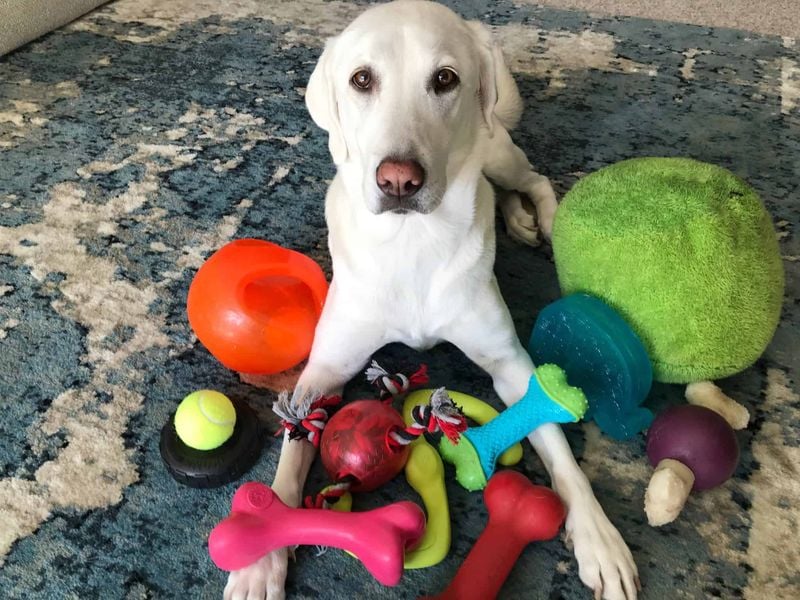13 Alarming Signs Your Dog Is Depressed (And What You Can Do About It)
Dogs experience emotions just like we do—joy, excitement, fear, and yes, even sadness and depression. While they can’t sit us down and tell us what’s wrong, dogs have their own ways of communicating distress. Through subtle shifts in behavior, changes in daily habits, and even the look in their eyes, our furry companions often send out signals that something isn’t quite right. As pet parents, it’s up to us to notice those signs and respond with compassion and care.
Whether your dog has recently gone through a major change—like the loss of a companion, a move, or a shift in household dynamics—or you’ve simply noticed that they seem “off,” it’s important to consider that their emotional well-being might be affected. Just like humans, dogs can experience periods of low mood or anxiety, and left unchecked, it can lead to more serious behavioral and physical issues.
The good news? You don’t have to be an expert to spot the red flags. By learning to recognize the early warning signs of depression in dogs, you can step in with comfort, enrichment, or even professional support before the problem deepens.
Here are 13 signs your dog may be dealing with depression—and what they might be trying to tell you.
1. Suddenly Snubbing Favorite Activities
Your normally ball-obsessed retriever now watches the tennis ball roll by without a flicker of interest. This dramatic shift in enthusiasm for previously loved activities often signals emotional distress in dogs.
When depression strikes, the joy your pup once found in play sessions, walks, or car rides mysteriously vanishes. Pay attention to this change, especially when it happens abruptly. Try introducing new toys or games to reignite their spark.
Short, positive play sessions with lots of praise can help. Sometimes a change in routine or environment might be just what they need to rediscover their playful spirit.
2. Mealtime Refusal or Overeating
Food often reflects a dog’s emotional state. A previously voracious eater who suddenly leaves their bowl untouched may be experiencing depression. Conversely, some dogs comfort-eat when feeling blue, much like humans reaching for ice cream during tough times.
Monitor any changes lasting more than two days. Try enhancing meals with a spoonful of pumpkin puree or low-sodium chicken broth to entice reluctant eaters. Hand-feeding can also provide reassurance and strengthen your bond.
If appetite changes persist beyond a few days, consult your veterinarian to rule out underlying medical conditions that might be causing discomfort.
3. Excessive Sleeping and Energy Loss
Dogs naturally sleep 12-14 hours daily, but depressed pups often retreat to slumber for significantly longer periods. You might notice your normally energetic companion barely lifting their head when you arrive home or sleeping through events that would typically excite them.
This lethargy goes beyond normal tiredness – it’s a profound lack of energy and enthusiasm. Your dog might seem constantly exhausted despite getting plenty of rest.
Create a consistent daily schedule with gentle exercise like short walks to help regulate their sleep patterns. Morning sunlight exposure can help reset their internal clock, potentially improving both mood and energy levels.
4. Hiding in Unusual Places
Finding your normally social butterfly wedged behind the couch or tucked away in closets signals emotional distress. Dogs instinctively isolate themselves when feeling vulnerable, similar to wild animals hiding when injured.
This withdrawal behavior represents their attempt to process difficult emotions or protect themselves. Your dog might avoid family gatherings or retreat when visitors arrive.
Create a comfortable, quiet safe space with their favorite blanket and toys, but don’t force interaction. Gently coax them out with treats and gentle praise.
Respect their need for space while showing they’re not alone. Gradually increase social exposure once they show signs of improvement.
5. Obsessive Licking or Chewing
Anxious behaviors like excessive paw-licking, tail-chasing, or fur-chewing often indicate emotional distress in dogs. These repetitive actions release endorphins, temporarily soothing your dog’s anxiety or depression – similar to how humans might bite nails when stressed.
Watch for raw, irritated skin or bald patches developing from this self-soothing behavior. Particularly concerning are sudden fixations on specific body areas. Redirect this behavior with interactive toys or puzzle feeders that engage their mind.
Consider anxiety wraps that provide gentle pressure for comfort. Consult your vet if the behavior causes physical damage, as they might recommend behavioral therapy or temporary anti-anxiety medication.
6. Unexpected Aggression or Irritability
Your normally gentle companion suddenly growls when approached during mealtime or snaps when touched in certain areas. This personality shift often signals emotional distress rather than behavioral problems.
Depression can lower a dog’s tolerance threshold, making normally acceptable interactions suddenly uncomfortable. Pay attention to specific triggers – certain people, situations, or handling particular body areas.
Never punish these reactions as they’re symptoms, not deliberate misbehavior. Respect their space and approach carefully. Use positive reinforcement when they remain calm during potentially triggering situations.
If aggression escalates or becomes unpredictable, consult a professional dog behaviorist who specializes in fear-based behaviors.
7. Persistent Whining or Howling
Increased vocalization, especially when nothing obvious triggers it, often signals emotional distress in dogs. Your normally quiet companion might start whimpering while resting or howl plaintively when left alone.
These sounds express discomfort, anxiety, or an attempt to communicate emotional needs. Note when these vocalizations occur – certain times of day or during specific situations might reveal the underlying cause.
Respond with calm reassurance rather than excessive coddling, which might unintentionally reinforce the behavior. Background music or white noise can help soothe anxiety when you’re away.
Establish a consistent routine with regular exercise to provide security and predictability that helps reduce stress-related vocalization.
8. Chewing Furniture and Belongings
Coming home to destroyed cushions or chewed shoes might signal more than simple boredom. Depressed or anxious dogs often turn to destructive behaviors as an outlet for emotional distress, especially when left alone.
This behavior releases pent-up feelings and provides temporary relief through the physical action of chewing. The pattern and timing of destruction offers clues – targeting your personal items might indicate separation anxiety.
Provide appropriate chew toys with different textures and rotate them regularly to maintain interest. Kong toys filled with frozen treats create positive associations and healthy outlets.
Consider crate training (when done properly) to create a secure space that prevents destructive behavior while providing comfort.
9. Bathroom Habit Disruptions
Your perfectly house-trained companion suddenly leaving puddles indoors may indicate emotional distress rather than defiance. Depression and anxiety commonly disrupt a dog’s normal elimination patterns and control. These accidents often occur in unusual places or at irregular times.
You might notice increased frequency, urgency, or complete disregard for previously established routines. Never punish these incidents as they’re involuntary symptoms. Instead, temporarily increase bathroom breaks and positive reinforcement when they eliminate appropriately.
Clean accidents thoroughly with enzymatic cleaners to remove scents that might encourage repeat marking. If problems persist, consult your veterinarian to rule out urinary tract infections or other medical conditions.
10. Velcro Dog Syndrome
Suddenly your independent pup transforms into your shadow, following you even to the bathroom. This dramatic increase in clinginess often signals insecurity and emotional distress in previously confident dogs.
Depression can trigger intense attachment as your dog seeks constant reassurance. They might panic when separated by even a door, or become distressed watching you prepare to leave. Build confidence through independence training – start with brief separations and gradually increase duration.
Create positive associations with your departure by offering special treats only given when you leave. Provide engaging puzzle toys that keep their mind occupied during alone time.
For severe cases, consider anti-anxiety wraps that provide gentle, constant pressure similar to swaddling a baby.
11. Avoiding Eye Contact
The soulful gaze that once met yours across the room now deliberately turns away. This subtle yet significant change in eye contact often indicates emotional withdrawal in dogs experiencing depression.
Healthy dogs typically maintain comfortable eye contact during interactions. When depressed, they may avert their gaze, appear vacant, or stare blankly past you. This disconnection represents their emotional retreat.
Rebuild trust through gentle interaction on their terms. Try lying on the floor at their level rather than looming over them. Engage in low-pressure activities like quiet reading nearby without demanding attention.
When they do make eye contact, reward with soft praise or treats to reinforce this positive connection.
12. Mysterious Weight Loss
Watching your dog’s ribs become increasingly visible despite no change in food offered signals a serious concern. Depression commonly affects metabolism and appetite, leading to unexplained weight loss even when food consumption appears normal.
Some dogs experiencing emotional distress may eat normally while you’re watching but leave food untouched when alone. Others might digest food less efficiently due to stress hormones affecting their digestive system.
Track their weight weekly using a bathroom scale (hold your dog, then subtract your weight). Try offering smaller, more frequent meals in quiet locations. Adding warm water to kibble enhances aroma and palatability.
If weight loss exceeds 10% of body weight, consult your veterinarian immediately as this could indicate underlying medical conditions.
13. Forgetting Basic Commands
Your once perfectly-trained companion now stares blankly when asked to sit or come. This regression in training often indicates cognitive disruption caused by depression or anxiety rather than stubbornness.
Emotional distress impairs concentration and memory in dogs, similar to how humans struggle to focus when depressed. Commands that were automatic now require visible mental effort, or they may seem genuinely confused by familiar requests.
Return to basics with short, positive training sessions using high-value treats. Keep sessions under five minutes to prevent frustration. Focus on rebuilding confidence through commands they master easily before progressing to more challenging ones.
Celebrate small victories with enthusiastic praise to rebuild their sense of accomplishment and strengthen your connection.



















